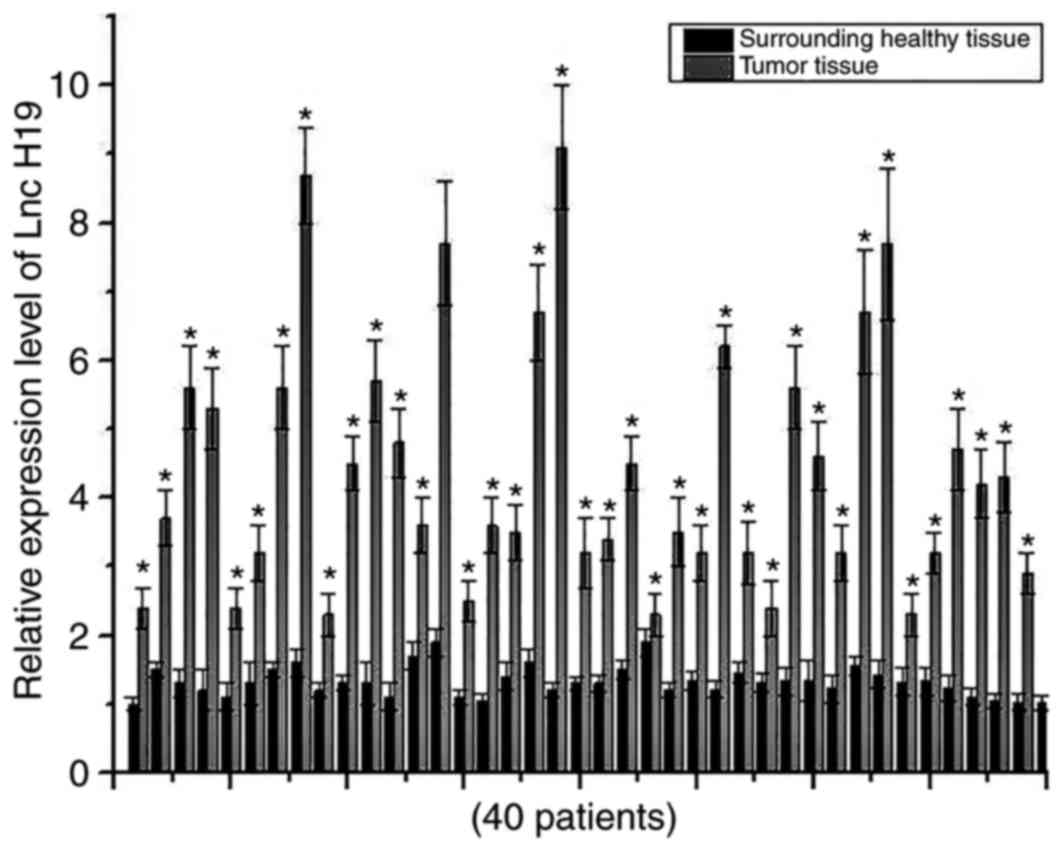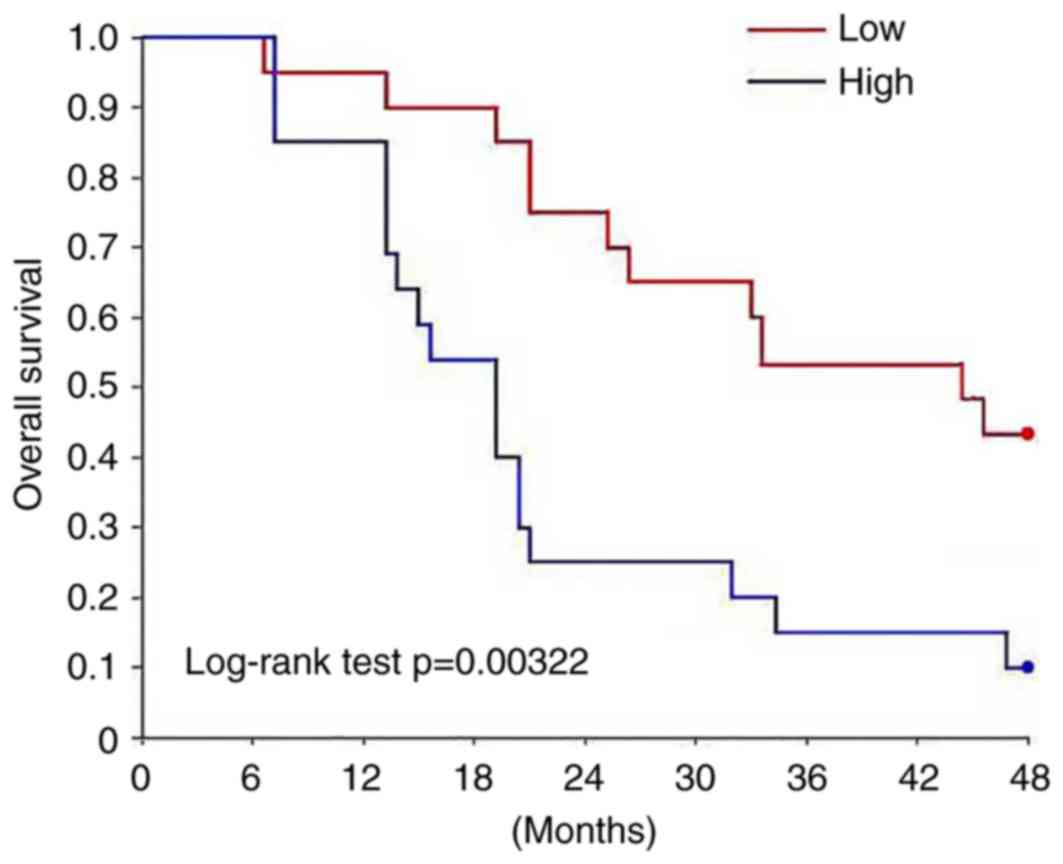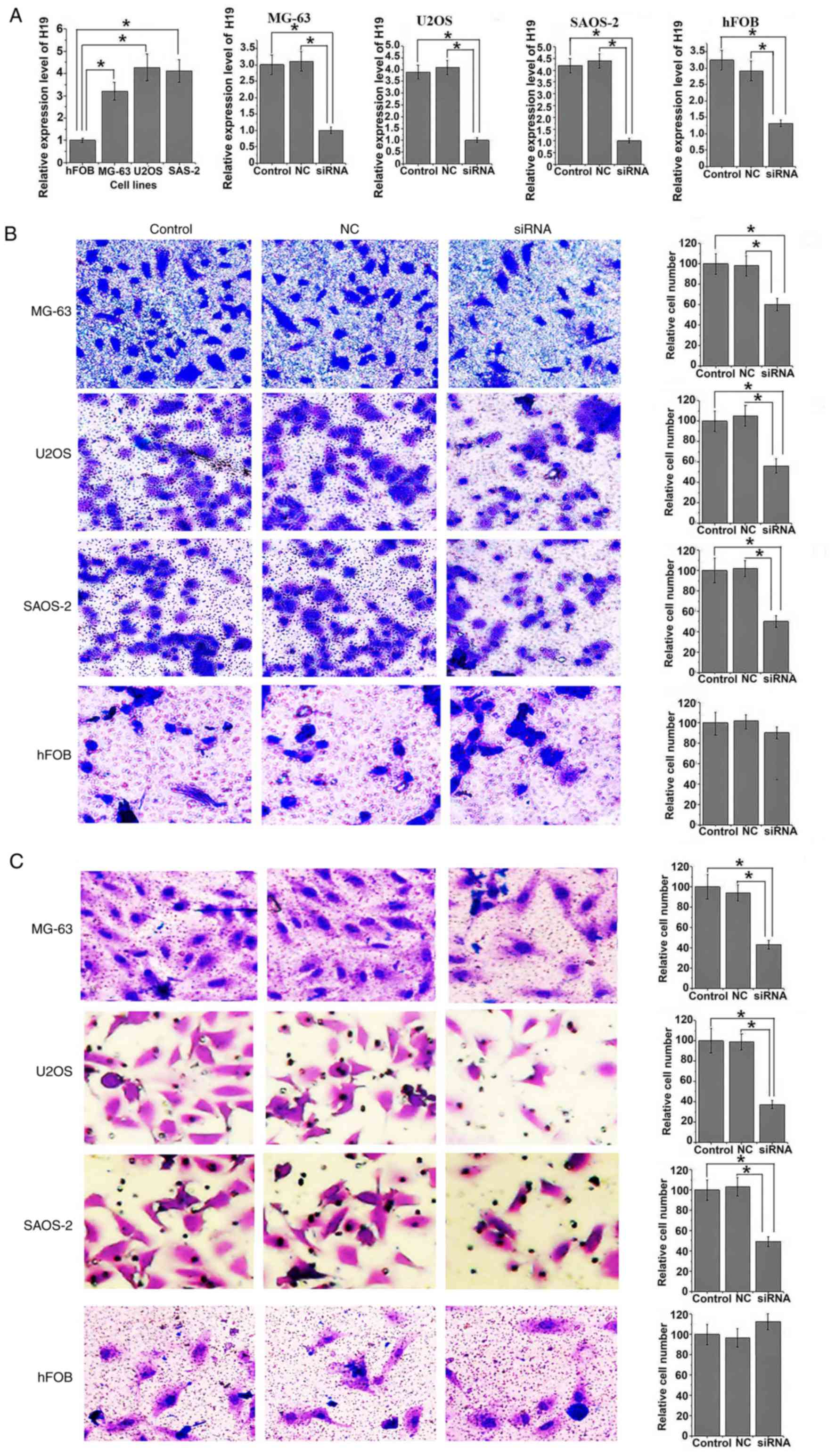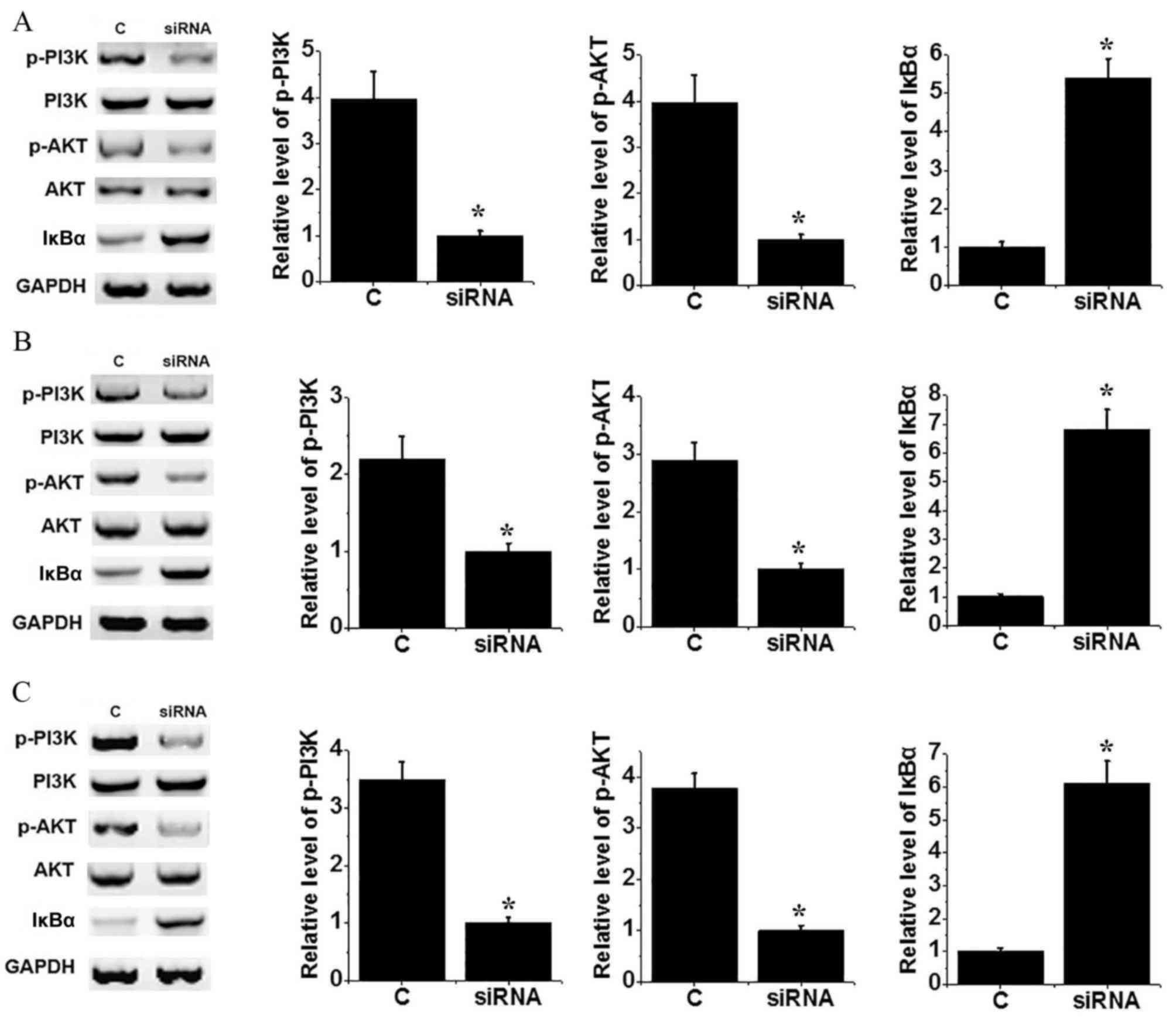Downregulation of lncRNA H19 inhibits migration and invasion of human osteosarcoma through the NF-κB pathway
- Authors:
- Published online on: March 14, 2018 https://doi.org/10.3892/mmr.2018.8746
- Pages: 7388-7394
Metrics: Total
Views: 0 (Spandidos Publications: | PMC Statistics: )
Total PDF Downloads: 0 (Spandidos Publications: | PMC Statistics: )
Abstract
The present study aimed to investigate the role of long non-coding RNA (lncRNA) H19 in the development of osteosarcoma and to determine the underlying mechanism involved. A total of 40 patients with osteosarcoma were selected and the expression level of H19 in tumor tissue and adjacent healthy tissue was detected by reverse transcription‑quantitative polymerase chain reaction. Survival curves were plotted using the Kaplan‑Meier method to investigate the prognostic value of H19 expression level for patients with osteosarcoma. H19 knockdown osteosarcoma cell lines were constructed using small interfering (si)RNA transfection. Cell migration and invasion abilities were measured by Transwell migration and invasion assays, respectively. Western blot analysis was performed to detect the expression levels of phosphatidylinositol 3‑kinase (PI3K), phospho (p)‑PI3K, RAC‑alpha serine/threonine‑protein kinase (AKT), p‑AKT and NF‑κB inhibitor α (IκBα) in osteosarcoma cells transfected with H19 siRNA. Expression level of H19 was significantly elevated in tumor tissue compared with adjacent healthy tissue. Expression level of H19 was positively associated with distant metastasis of osteosarcoma (P<0.01), but not with gender and age. Overall survival of patients with osteosarcoma with high H19 level was significantly shorter compared with patients with low H19 expression (P<0.05). H19 knockdown significantly reduced migration and invasion ability of osteosarcoma cells. Significantly decreased levels of p‑PI3K and p‑AKT, and elevated level of IκBα were observed in H19 knockdown osteosarcoma cells compared with control osteosarcoma cells, while no significant differences in levels of PI3K and AKT were observed. Therefore, the present study demonstrated that knockdown of lncRNA H19 can inhibit migration and invasion of human osteosarcoma cells by inhibiting the nuclear factor-κB pathway.













